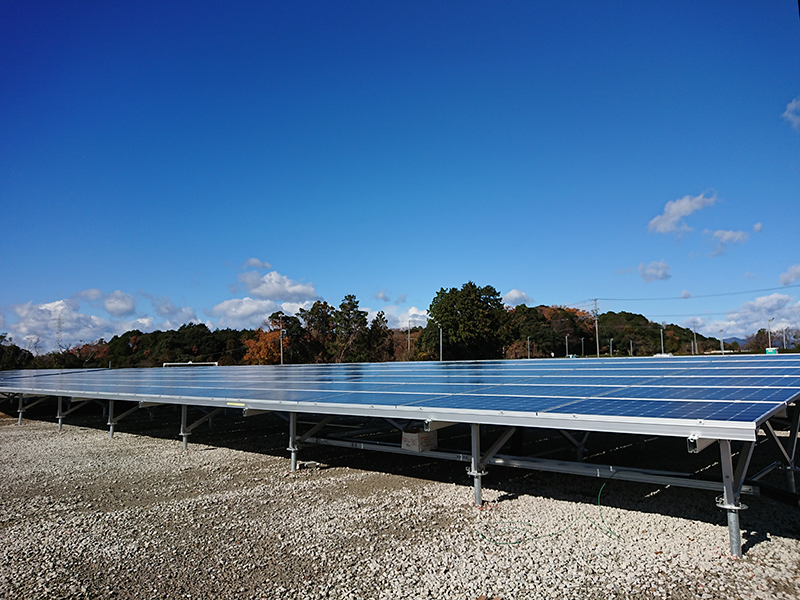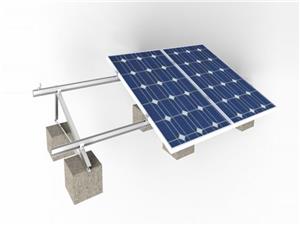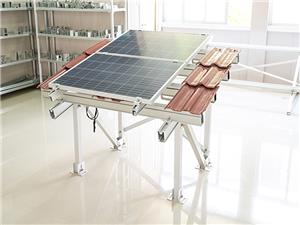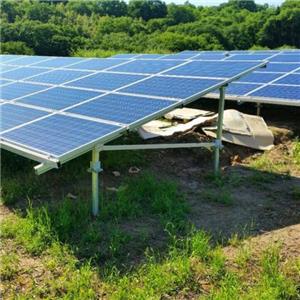The skeleton of a photovoltaic power station-photovoltaic Mounting structure
The skeleton of a photovoltaic power station-photovoltaic Mounting structure
Photovoltaic power station is a system engineering, inseparable from components such as photovoltaic modules, inverters, combiner boxes, cables, etc., and also inseparable from the skeleton of the power station-the photovoltaic mounting racks.
Photovoltaic brackets are special structural parts designed and installed in photovoltaic power generation systems to support, fix, and rotate photovoltaic modules. In order to achieve the best power generation efficiency of the photovoltaic power station, the photovoltaic support must be combined with the topography, climate and solar resource conditions of the construction site, and the photovoltaic modules should be fixed in a certain orientation, arrangement and spacing.
Features of photovoltaic support
In specific photovoltaic power station projects, photovoltaic brackets have the following characteristics:
Photovoltaic mounting structures need to be used for a long time in a specific environment. It has strong mechanical properties such as wind pressure, snow pressure, earthquake resistance, corrosion resistance, etc., to ensure normal operation in various harsh environments such as sand, rain, snow, earthquake, and the service life is generally required to reach more than 25 years.
Photovoltaic brackets need to meet the various standards of the project site. The core of photovoltaic power station design is structural design. The entire photovoltaic power station structure design is mainly realized through photovoltaic brackets, which play an important role in the construction of photovoltaic power stations. The product quality, design and installation of photovoltaic brackets need to comply with the climate environment, construction standards, power design and other standards of the project site. Choosing appropriate photovoltaic brackets and scientific and reasonable design and installation can not only reduce project cost and improve power generation efficiency, but also reduce the cost of later operation and maintenance.
Classification of photovoltaic supports
According to whether it can track the rotation of the sun, photovoltaic solar mounting supports can be divided into fixed supports and tracking supports. In the photovoltaic power generation system, the fixed bracket and the tracking bracket need to be designed for different projects.
First of all, the initial stage of the project needs to pass the geological survey report of the project to complete the preliminary design of the support foundation; secondly, complete the pull-out force test of the column according to the force of the support to determine the support foundation form and column form; at the same time, according to different national standards and different projects Location wind load, snow load and other climatic conditions, confirm the overall support design; finally, complete the corresponding support arrangement and order according to the module form, number of modules in series, inverter and combiner box and other photovoltaic components in the photovoltaic system. Body bracket design.
Further classification: fixed brackets can be divided into ordinary fixed brackets and fixed adjustable brackets; tracking brackets can be divided into flat single-axis tracking brackets, oblique single-axis tracking brackets, and dual-axis tracking brackets.
For photovoltaic power stations with fixed solar mounts, at the beginning of the design, the modules will be fixed at a specific angle in accordance with local geographical environment, climate and other conditions to ensure that they can receive the maximum solar radiation. After the position of the modules is fixed, they will generally not be adjusted frequently. For fixed and adjustable brackets, the component orientation will need to be adjusted manually every year according to the season and light conditions. The fixed bracket has low price, good stability, low initial investment cost, but low utilization rate of solar energy.
The photovoltaic system adopts the tracking bracket, and the component orientation is adjusted according to the light situation, which can reduce the angle between the component and the direct sunlight, obtain more solar radiation, and effectively improve the power generation efficiency. Power stations using tracking brackets need to increase a certain amount of initial investment costs, and need to bear a certain amount of equipment operation risks and subsequent maintenance costs.
Actual power generation data show that the use of flat single-axis tracking support, oblique single-axis tracking support, and dual-axis tracking support can effectively increase the power generation of the power station. If the tracking bracket is combined with the double-sided module, it can also produce a superimposing effect of increasing the power generation. In the long term, it will help the power station owner to achieve the greatest economic benefits and reduce the cost of electricity.
For tracking solar mounting rack products, in addition to the same mechanical design, machining and outsourcing galvanizing processes as the fixed bracket, there are also electronic control design, drive design, adding algorithms and supporting assembly processes.





